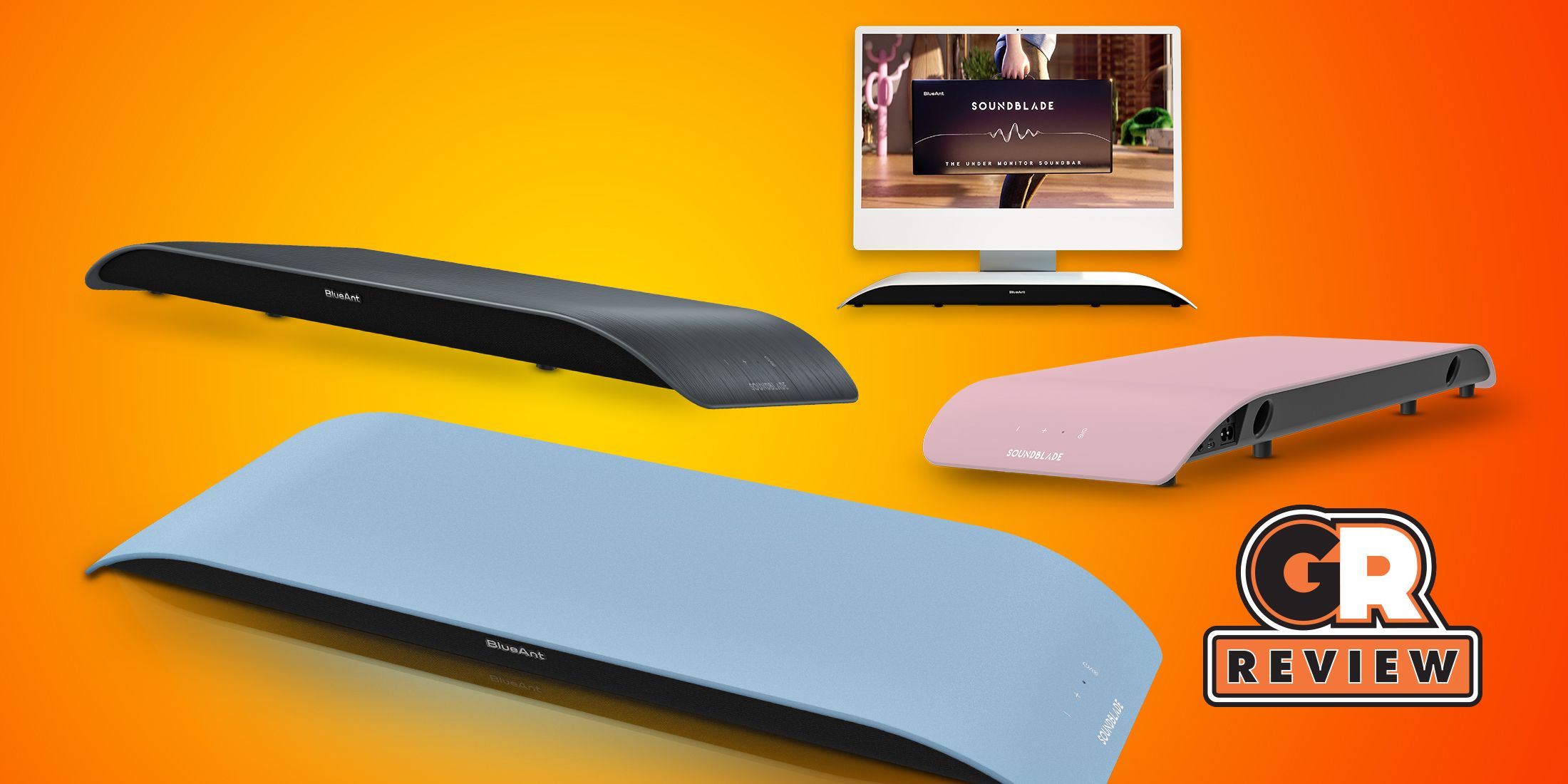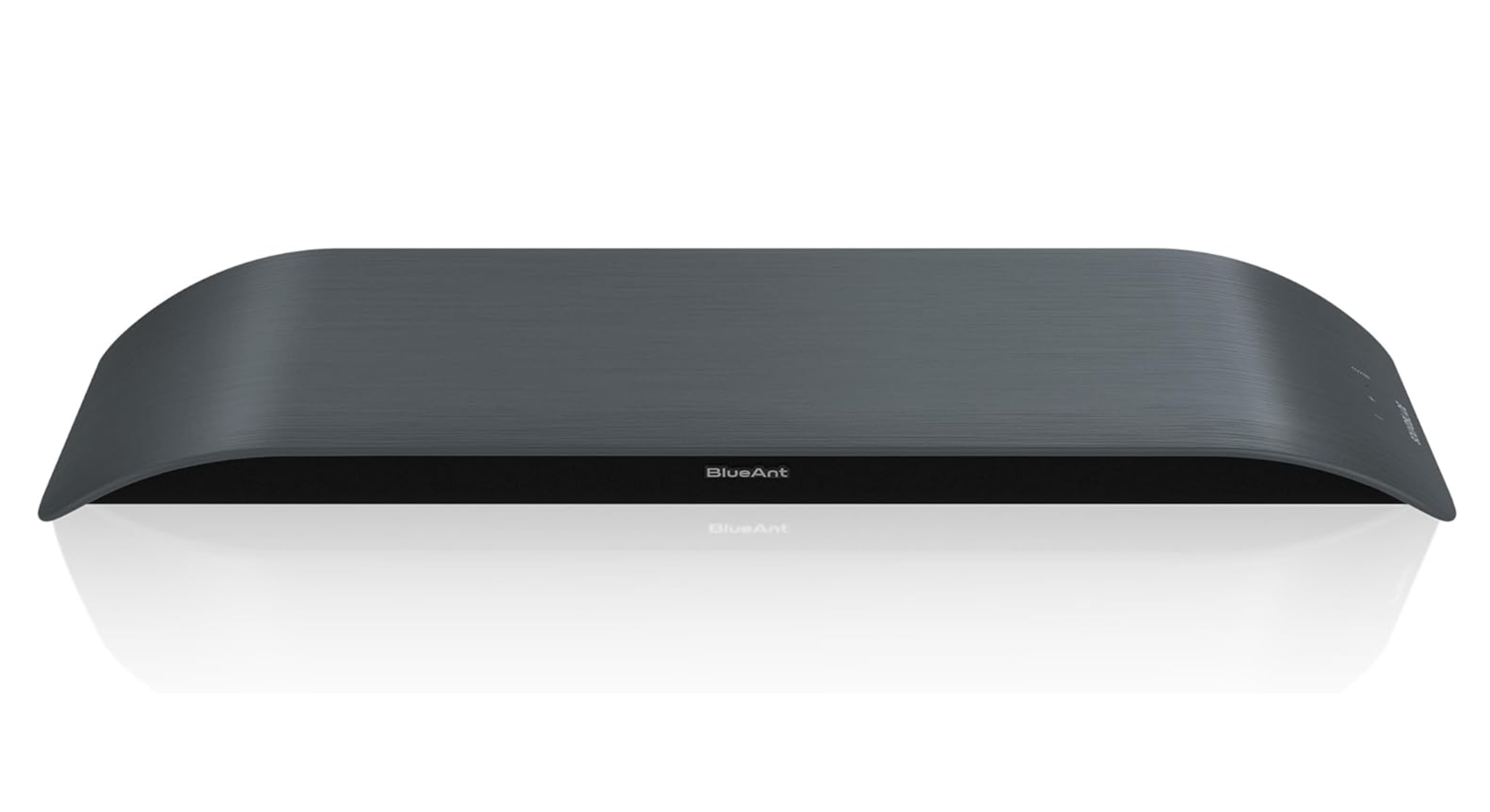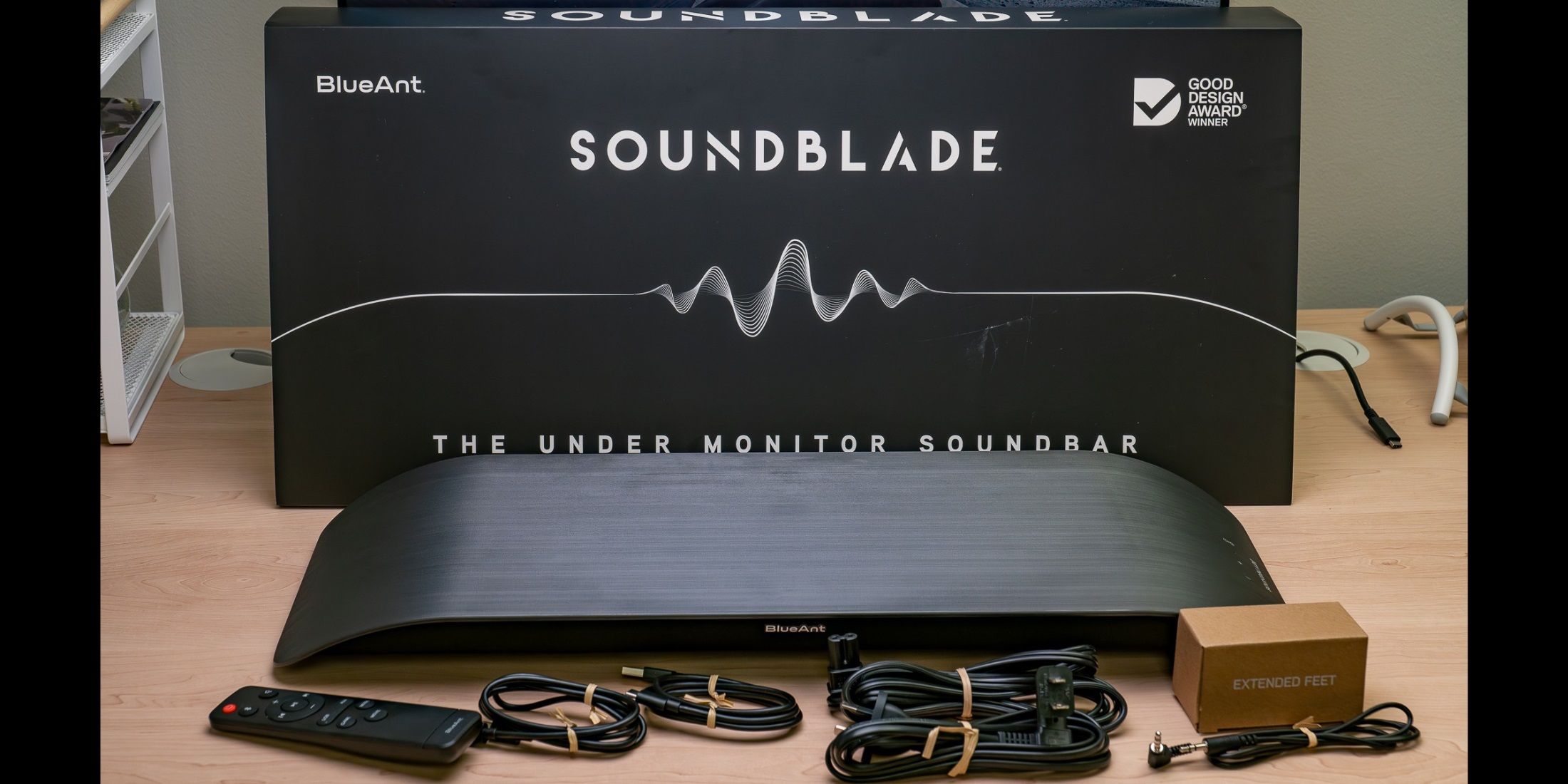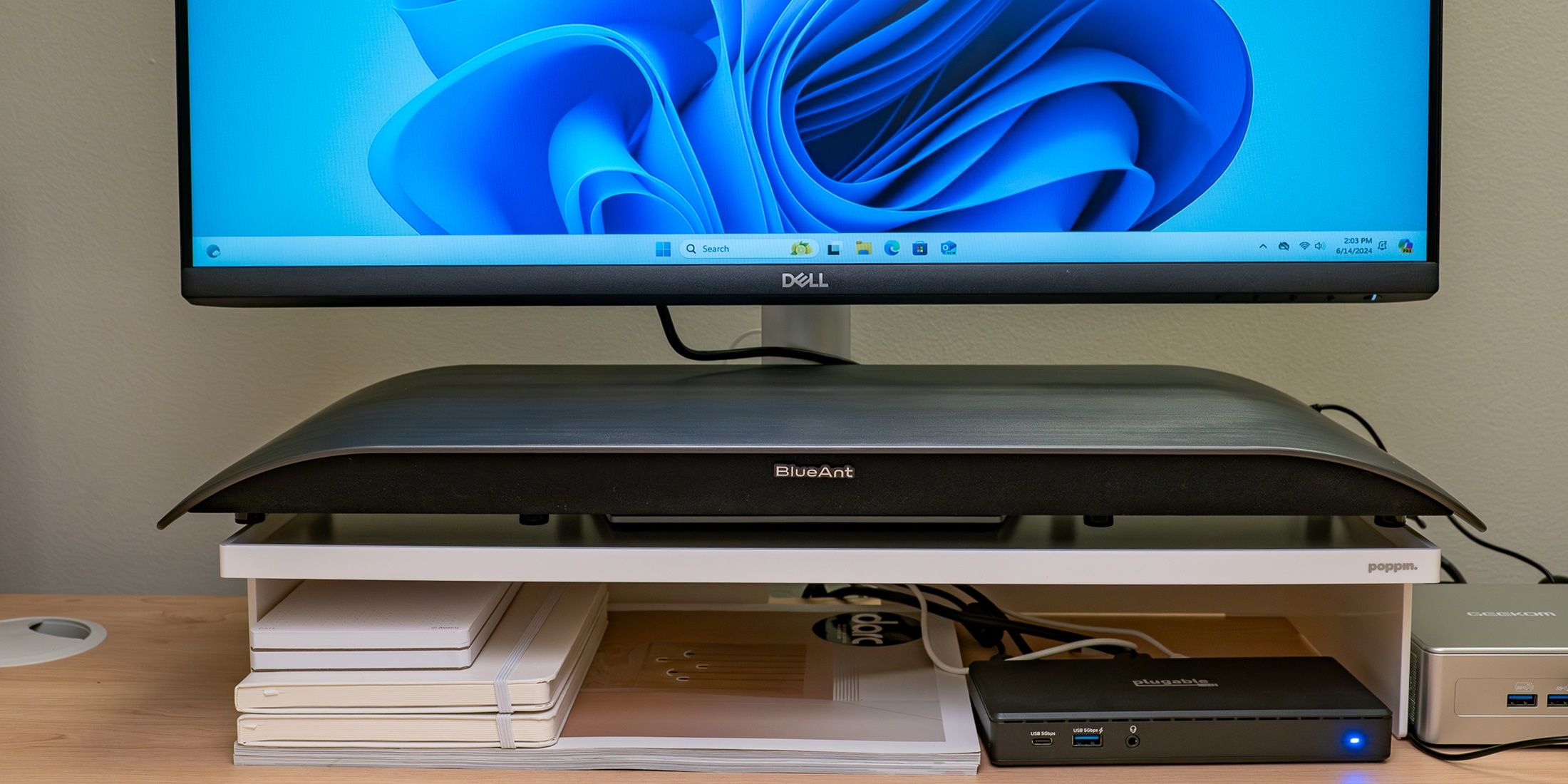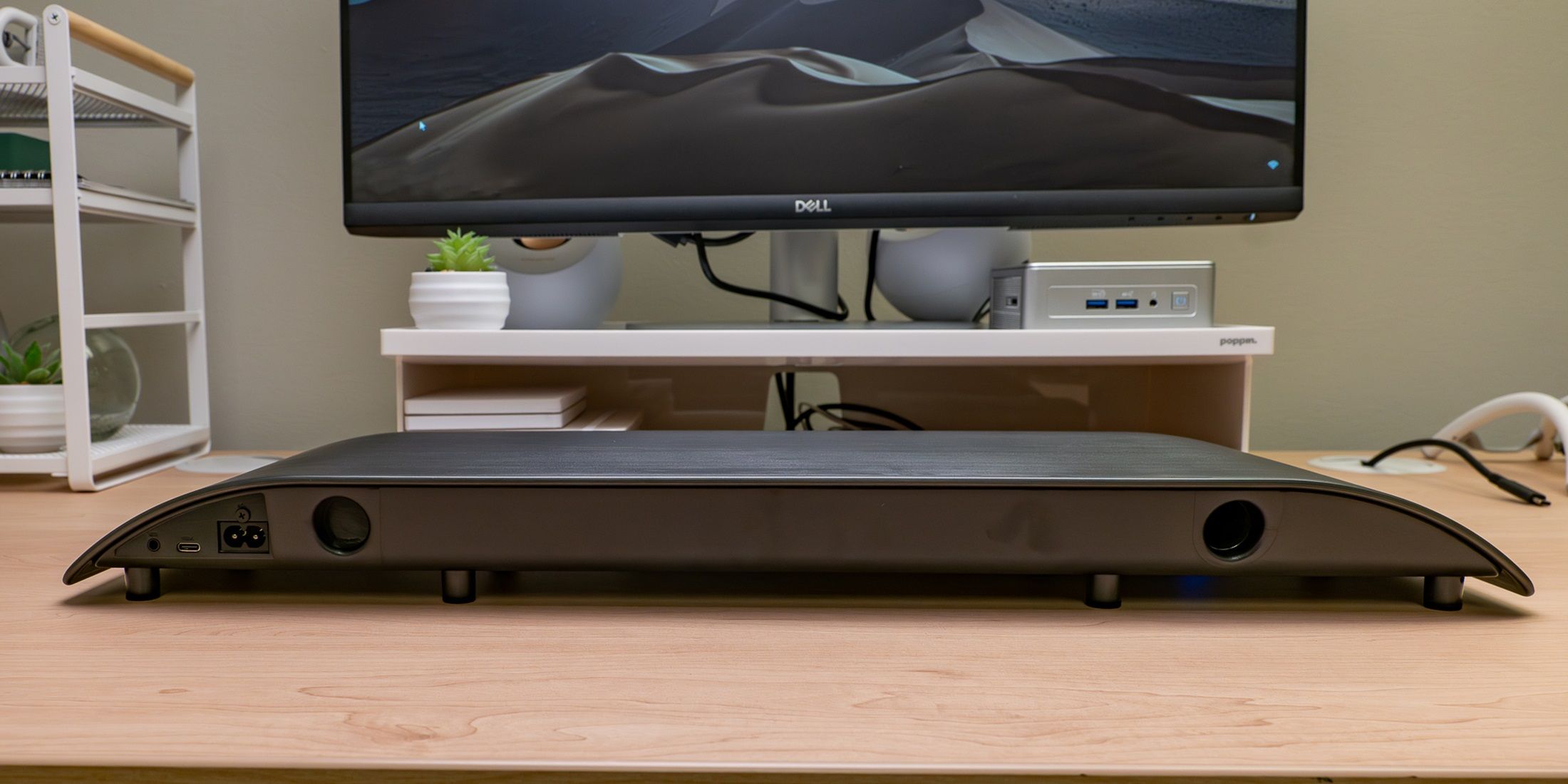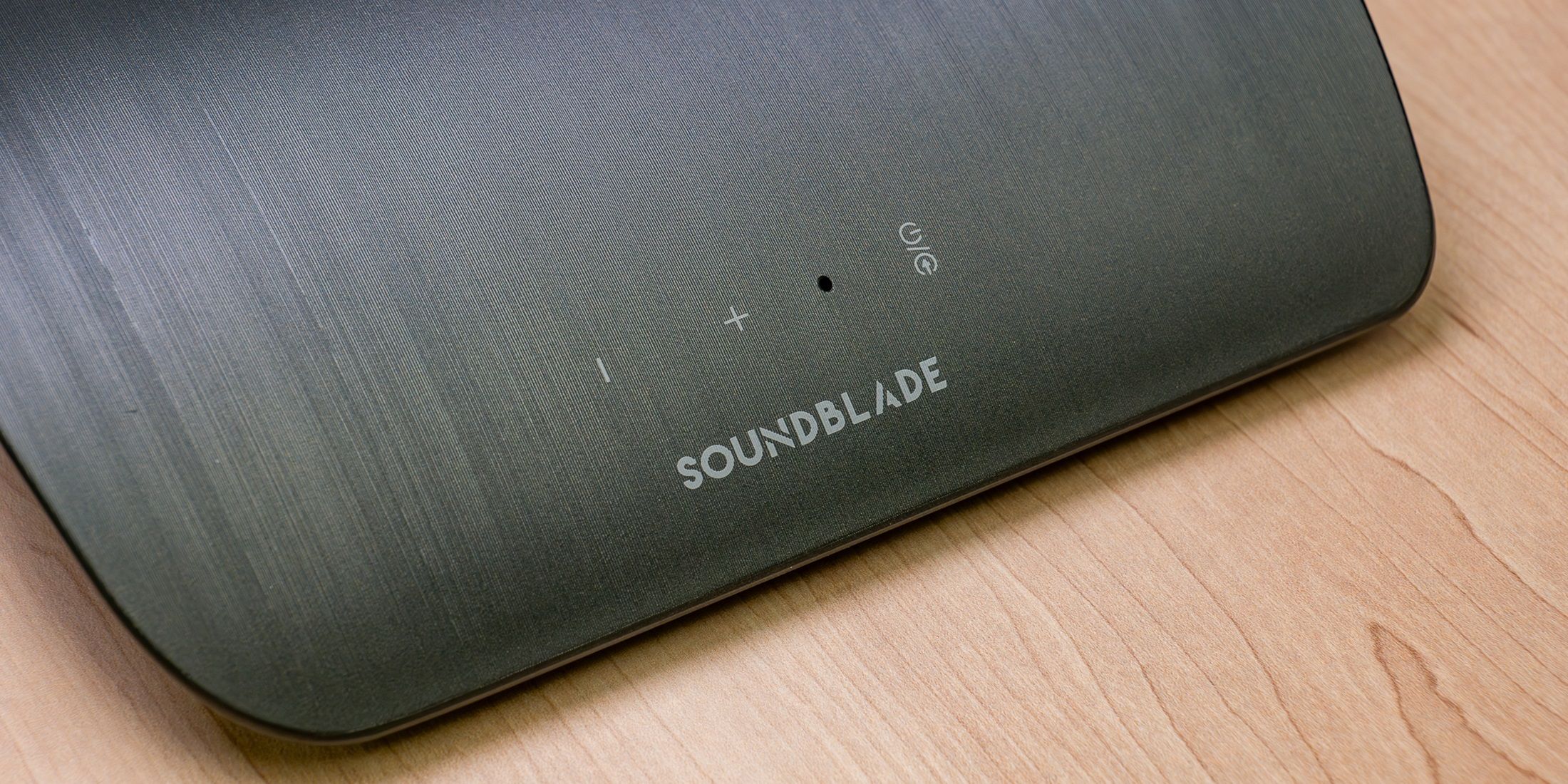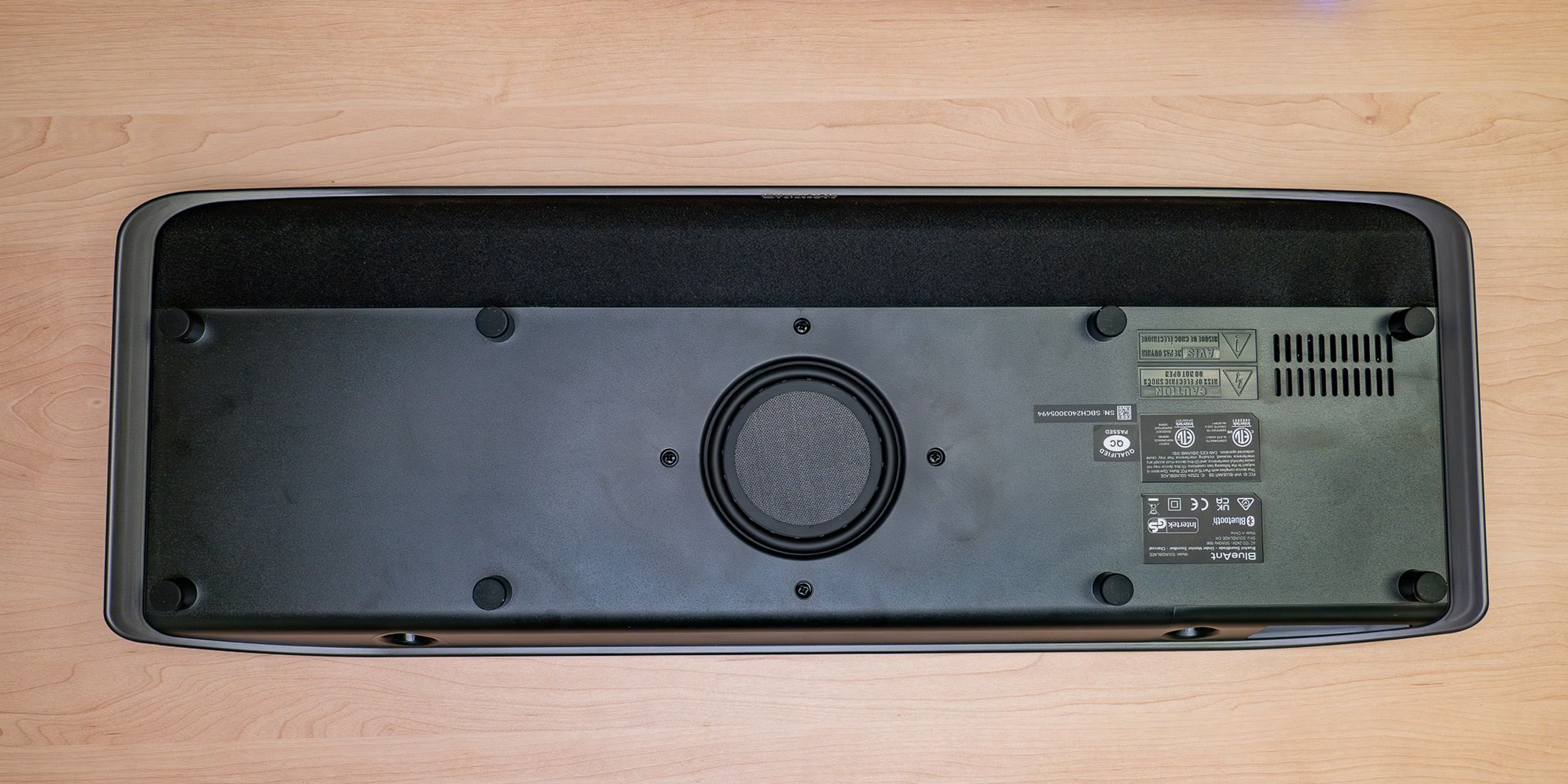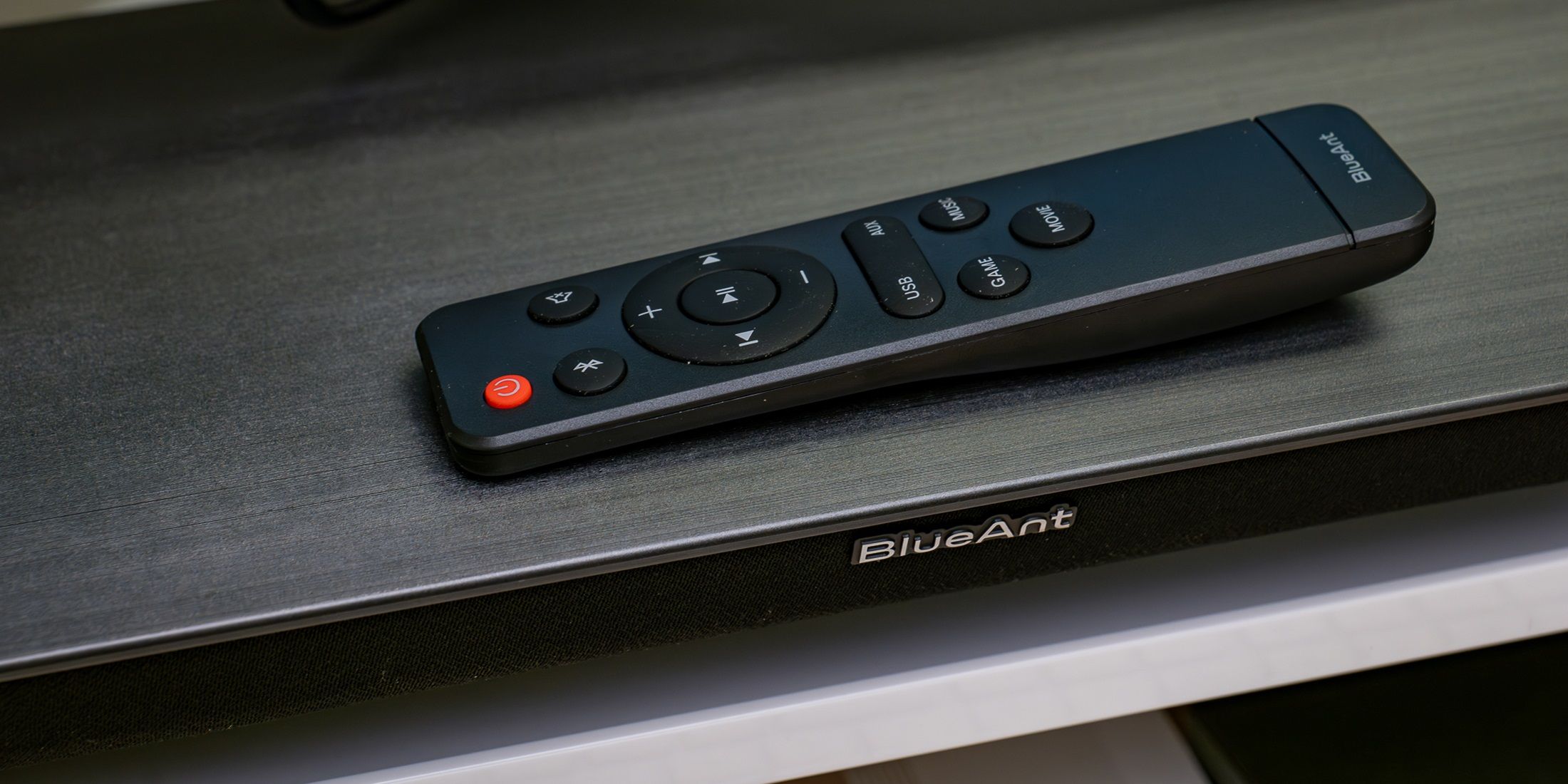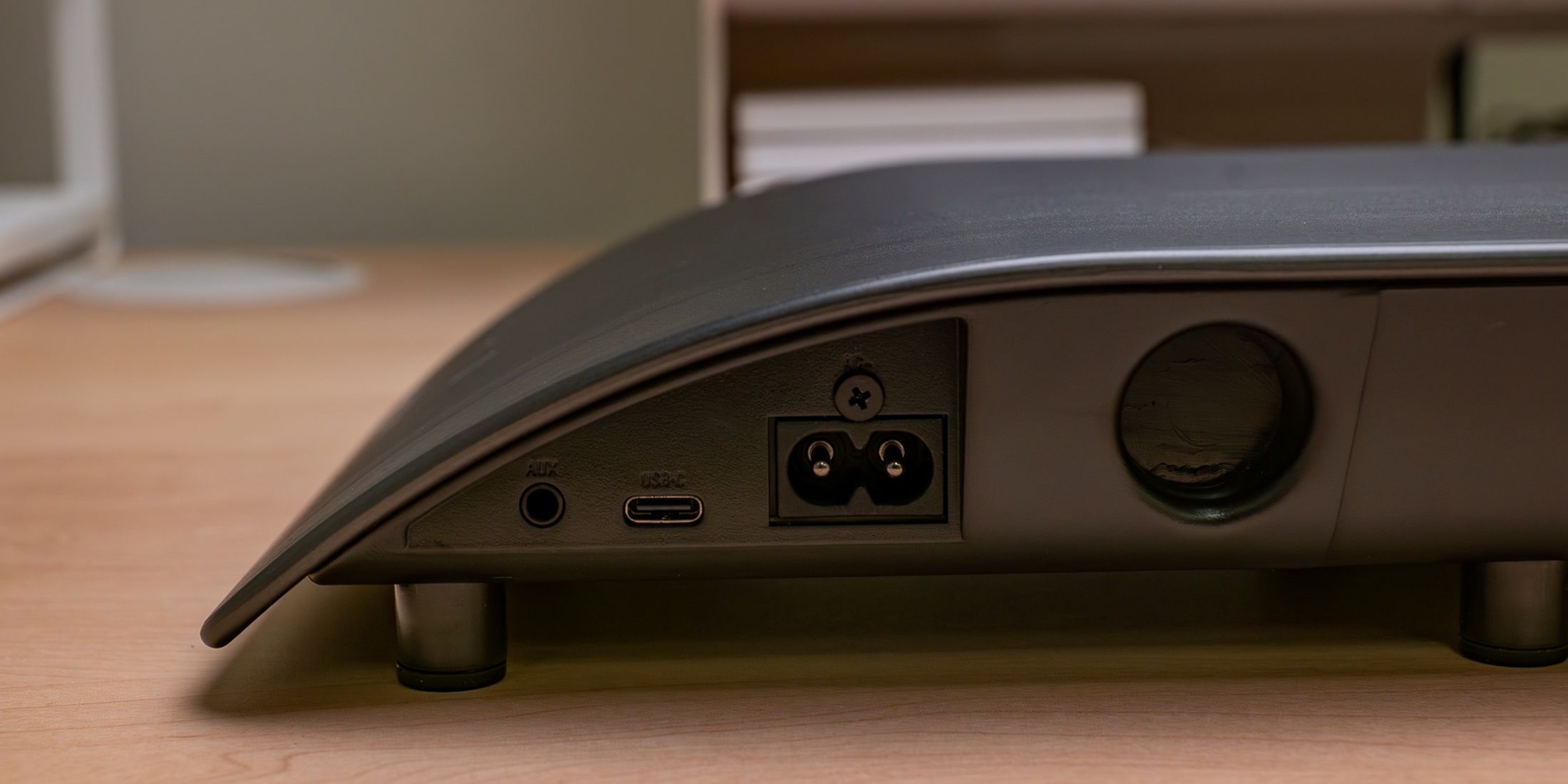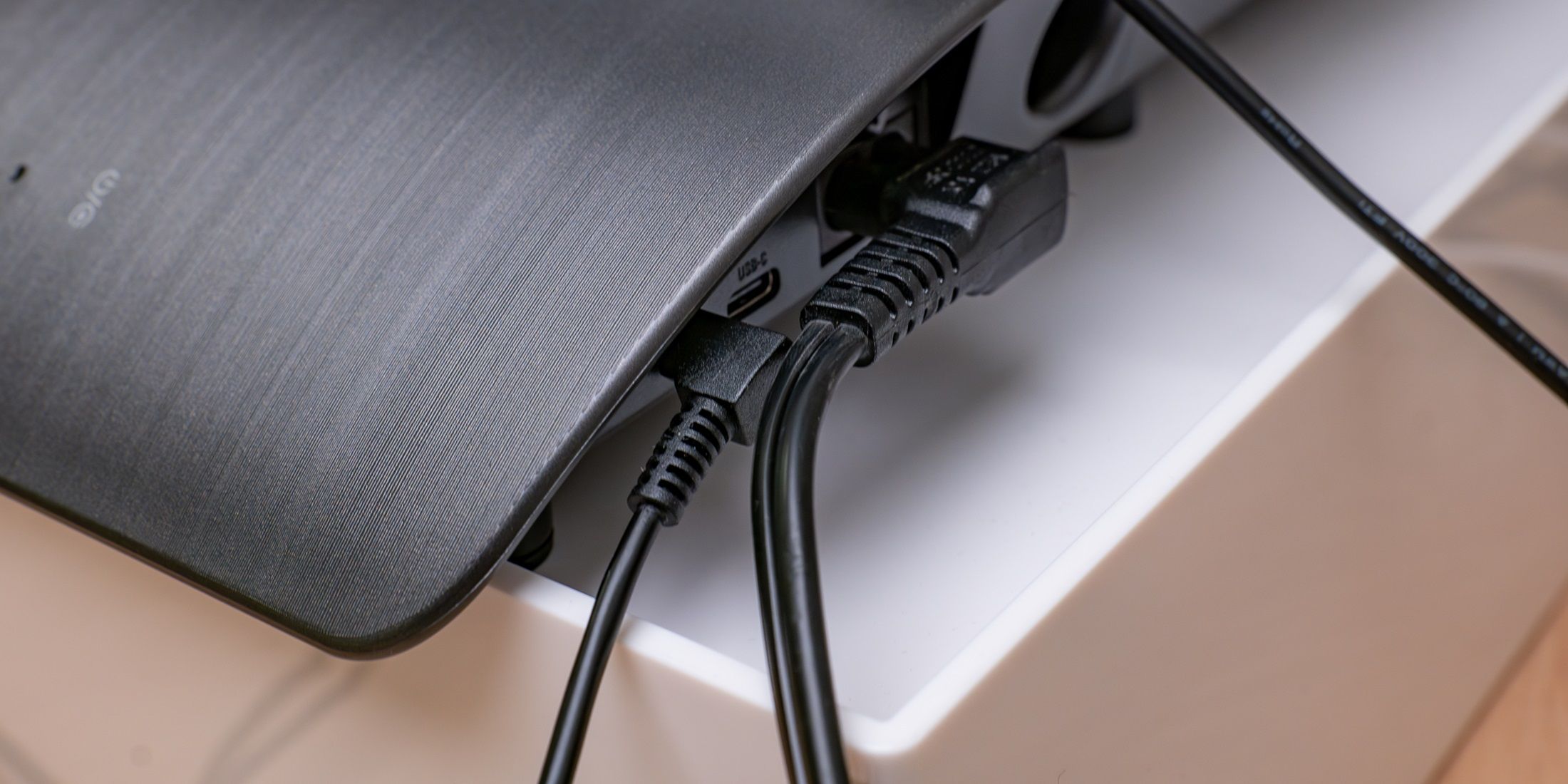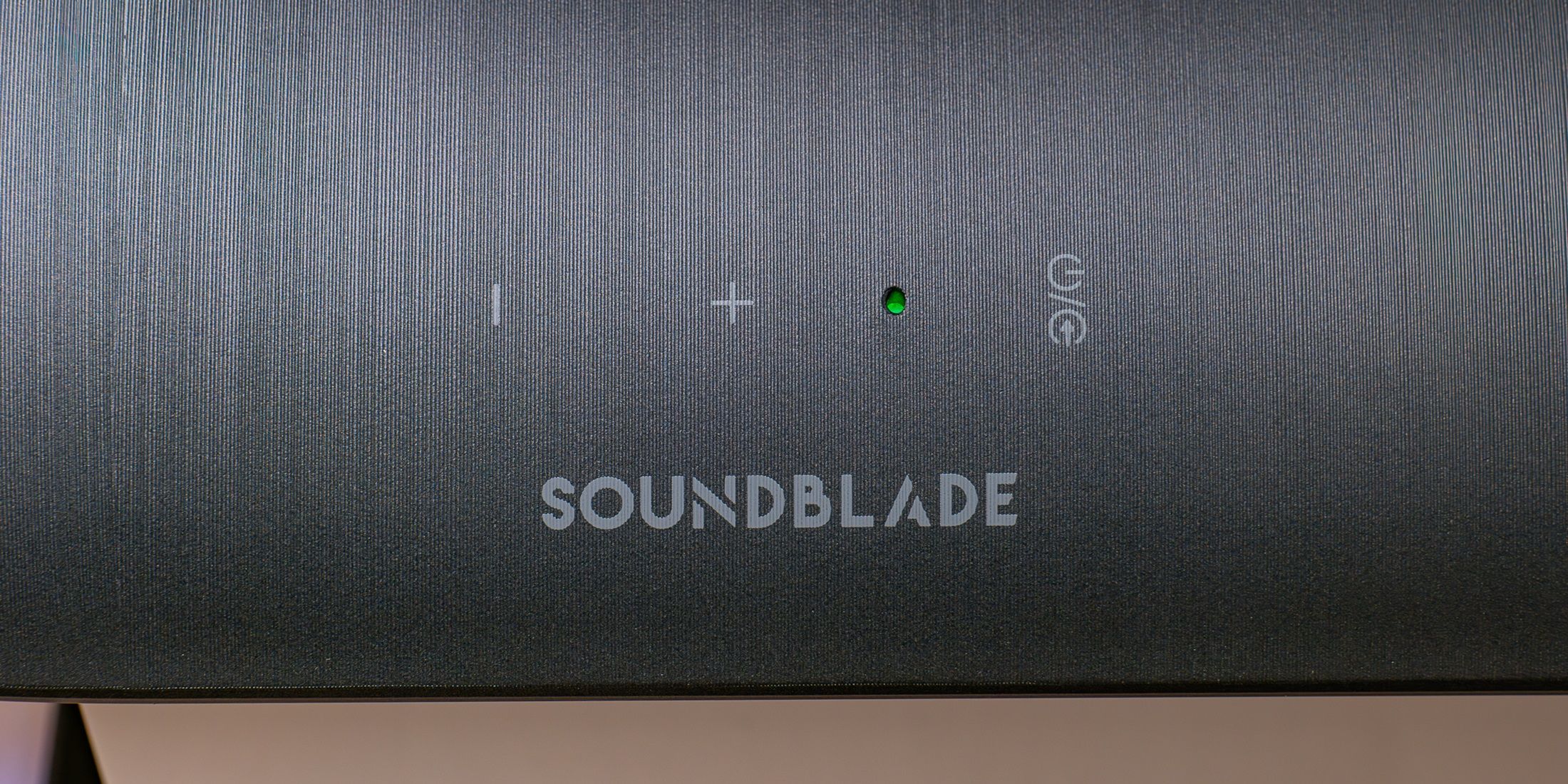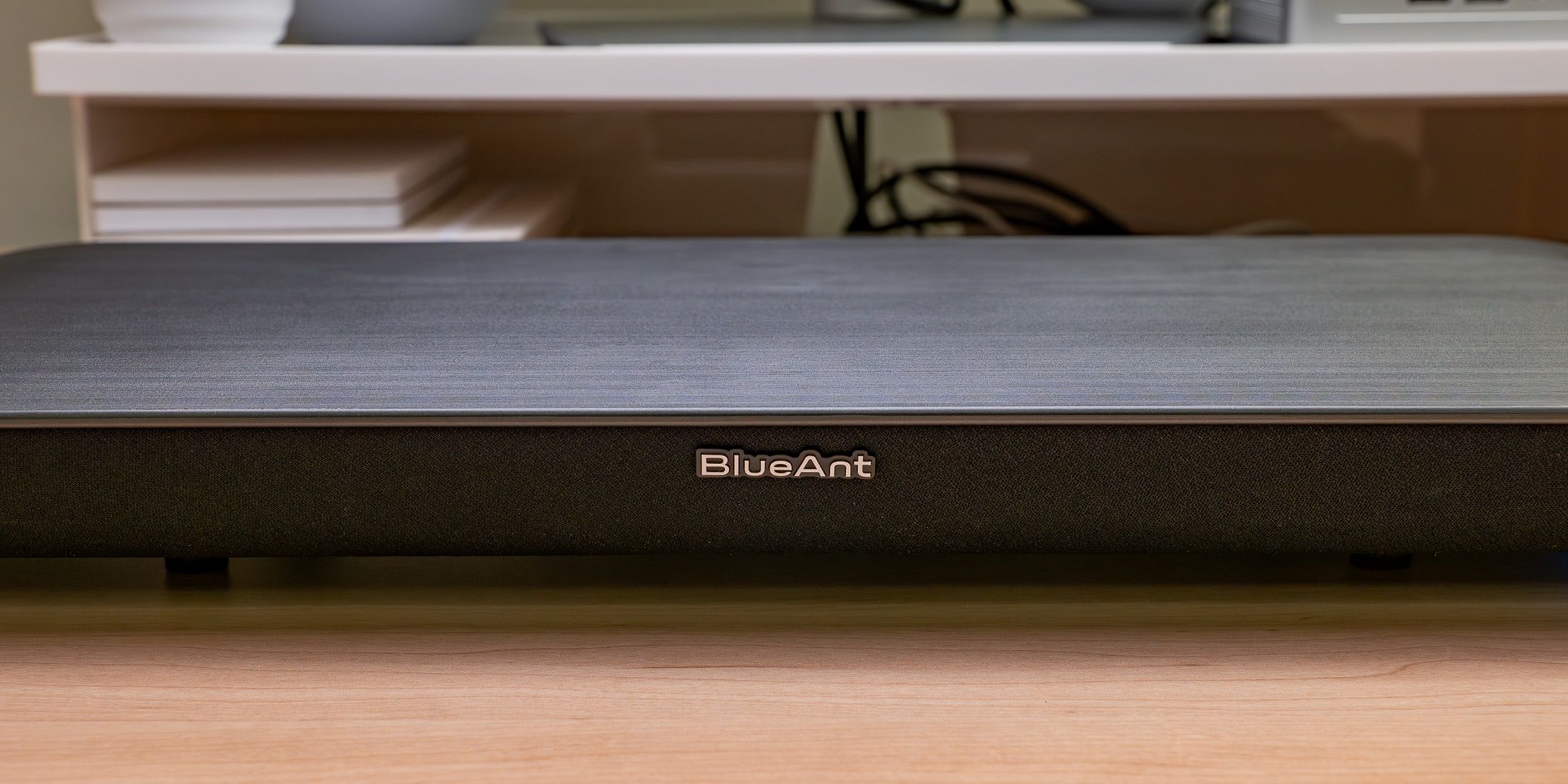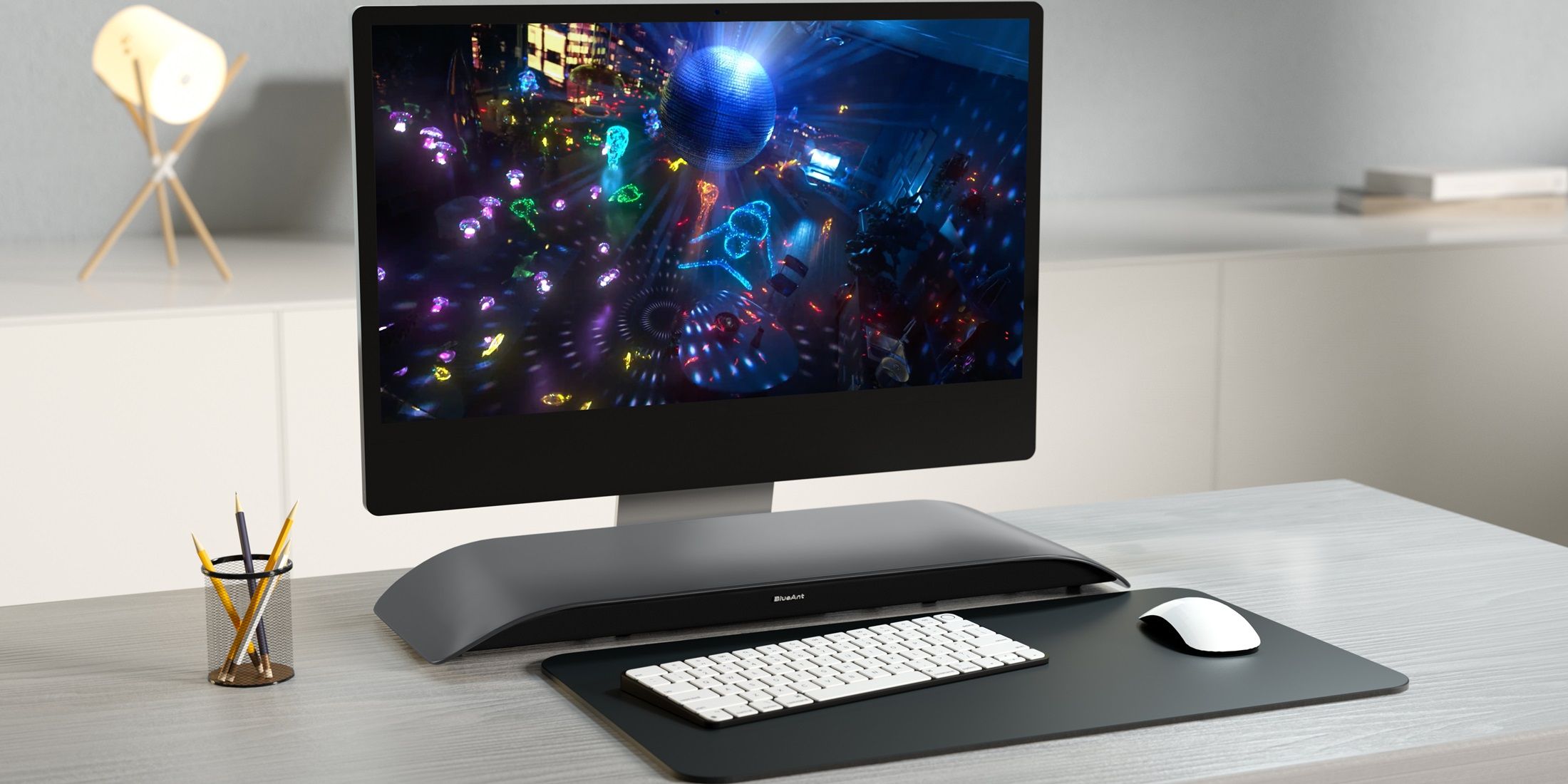Quick Links
With an emphasis on experiencing spectacular visuals, sound is often an afterthought when building gaming PCs. While many quality gaming headsets are available, finding adequate computer speakers can be more challenging. Producing audio as impactful as fluid 4K graphics requires large speakers that quickly clutter a desktop. The BlueAnt Soundblade tackles this dilemma with a low-profile design that redefines what compact soundbars are capable of.

The Best Gaming Soundbars in 2024
Gaming soundbars are gaining popularity by the day, and they all sound so good! Here are the best soundbars for gaming.
The Soundblade is large enough to outperform many small speakers but blends into setups by resting on monitor stands. Making intelligent use of its surface area, this $200 soundbar features a down-firing subwoofer underneath its bottom panel. Along with high-bitrate USB-C audio, listeners can pair Bluetooth sources with the device. Promising an easy setup and a powerful yet balanced sound, Game ZXC tested the BlueAnt Soundblade to see if it meets these lofty expectations.
Contents of Package
Matching its dimensions, the BlueAnt Soundblade ships in a thin but decently wide box. The back of the box shows a large image of the soundbar and clearly indicates connectivity options and source compatibility. Packaging is premium inside and outside the container, with parts separated into different sections and smaller boxes. Buyers will receive a remote control with two AAA batteries, a power cord, a USB-C to USB-C cable, a USB-C to USB-A cable, a 3.5 mm analog audio cable, and optional extended feet.
Design
Other manufacturers, like Dell, have created soundbars specifically for monitors used for work or gaming. However, they are usually downsized versions of TV soundbars or are meant to attach directly underneath a monitor's bottom bezel. The Soundblade is a different beat altogether, as it's much deeper from front to back but can still minimize the footprint when placed on top of monitor stands. BlueAnt emphasizes that monitors should not sit on the Soundblade, even if it's tempting in some setups. That said, much of the soundbar's top is flat and can support more than 60 pounds.
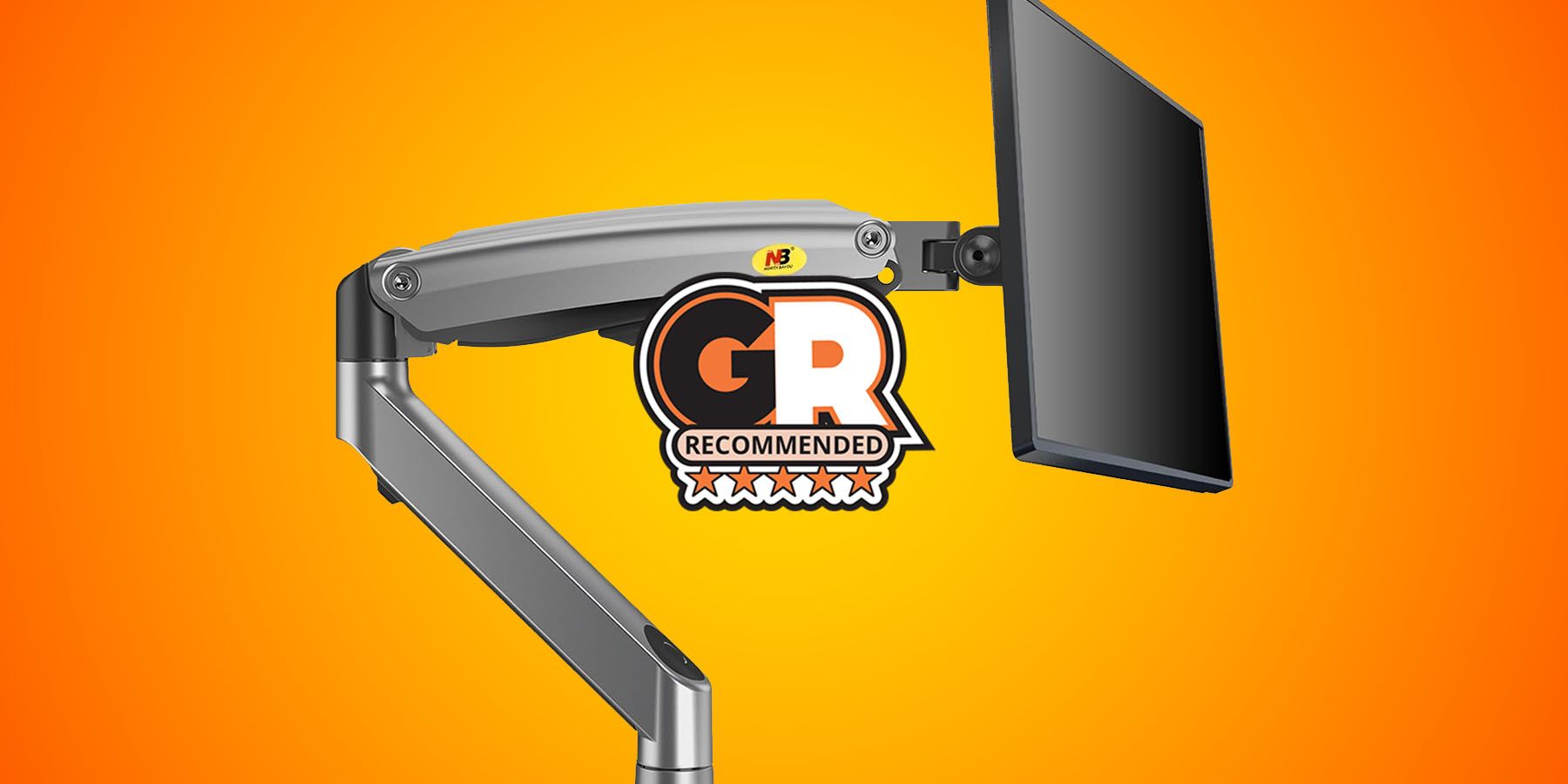
Best Monitor Stands in 2024
Whatever monitor stands users are looking for, Game ZXC has everything covered with the best you can buy right now.
How tidy the Soundblade appears below a monitor will partly depend on the type of stand and size of the display. Still, it shouldn't look out of place underneath the smallest or widest monitors, measuring 23 inches wide, 8.58 inches deep, and just 2.13 inches tall.
An elongated speaker grill covers the front of the soundbar below the BlueAnt logo. The back of the Soundblade is unassuming, with connections for power and sources confined to its left side.
Even though much of the Soundblade is hard plastic, its exterior has an attractive brushed-metal finish. The soundbar is also available in other colors besides black, including white, pink, and blue. As a result, it's difficult to find a setup that wouldn't match the Soundblade's look. Touch controls are on the right side of the device to adjust volume levels, change inputs, and turn the device on or off.
On the bottom of the Soundblade, the 80 mm neodymium subwoofer is visible. By default, the soundbar has shorter legs, but BlueAnt provides longer versions to accommodate any scenario. The only issue is that with the longer legs, the Soundblade becomes more unstable when sliding around a desktop.
Since the touch controls on the soundbar may not be easily accessible, the Soundblade also ships with a remote control. The button layout is straightforward, allowing listeners to select EQ settings, change inputs, and adjust volume levels. Buyers will also find a Bluetooth command, which makes pairing iPhone and Android smartphones and tablets to the Soundblade much easier.
The Soundblade strikes a balance between compactness and outputting a more well-rounded soundscape. Despite being low-profile, it's deep enough to take up some additional desk space, but this is a compromise many buyers should be willing to make.
Installation
Game ZXC evaluated the Soundblade with several different monitors, and the soundbar's design proved highly adaptable. Even so, if buyers normally keep their monitors set low on an adjustable stand, they could potentially have to shift them upwards. The optional taller feet provide more options to keep the soundbar balanced for displays with stands that aren't very deep.
TV soundbars aim to make connecting sources easier than a complicated home theater setup. The BlueAnt Soundblade is no exception. Focused on PCs, its ports are limited to USB-C and a 3.5 mm auxiliary analog audio input. If buyers intend to use the soundbar as a Bluetooth speaker, the only cabling necessary is the power cord without an external brick.
The lack of HDMI or optical inputs will disappoint buyers hoping to connect a TV to the soundbar. On the other hand, most modern TVs have Bluetooth connectivity, and there are low-cost adapters to convert optical audio signals to analog.
The preferred method of using the Soundblade with PCs is through its USB-C connectivity. This ensures the highest-quality audio possible using either a USB-C or USB-A cable. Unlike many speakers from Razer or Logitech, users won't have to install any software, and the setup process is plug-and-play. The Soundblade should immediately appear in Windows sound settings, requiring users only to set it as the default device.
Sound Quality and Usage
The simplicity of installing the Soundblade carries over to its day-to-day usage. Besides the touch controls and an LED indicator, the soundbar features voice commands to confirm input changes and when EQ settings are activated.
It's a bonus not having to deal with laggy apps to make changes, but listeners can't fine-tune the sound beyond the Game, Music, and Movie modes. There are also no game-specific profiles for surround sound, but a compact 2.1 soundbar would limit the impact of 3D audio anyway. Regardless, the Soundblade handles a variety of content surprisingly well.
One of the most common reasons buyers upgrade from the internal speakers of a monitor or TV is to improve the clarity of voices. Acting like a center channel speaker, the Soundblade is an excellent soundbar for dialogue, whether for watching YouTube videos, movies, or monitoring conference calls. Even at higher volumes, no communication is lost due to distorted or unbalanced audio.

The Best Budget PC Speakers for 2024
When building a PC setup, too often speakers are overlooked components. These budget PC speakers are affordable ways to complete a new rig.
As a gaming and movie soundbar, the Soundblade performs admirably. Benefiting from full-range neodymium drivers, listeners won't experience the static they often hear with cheap PC speakers. The 80 mm subwoofer employs the same technology, and while it won't replace a standalone alternative, desktops adequately vibrate during explosions. FPS titles like Counter-Strike thrive on headsets with spatial audio, but there is enough separation in the left and right channels of the Soundblade for the audio to feel immersive.
If the BlueAnt Soundblade has a weakness, it's with music, especially orchestral tracks featuring a wide-ranging soundscape. Like most soundbars, the Soundblade struggles to give the impression that a full arrangement of instruments is in a gaming room or office. Discerning mid-tones between violins and tubas becomes difficult, with vocals only complicating matters further. For around $200, music buffs or aspiring producers can purchase a decent pair of budget studio monitors, which provide balanced audio emanating from distinct left and right channels. However, professional quality sound comes at the expense of desk space.
The Soundblade's three EQ settings help it adapt to different content up to a certain point. Choosing the Game profile makes the bass boomier, and the similar Movie mode isolates dialogue even more effectively. Audiophiles will have to resort to third-party software, which could potentially fine-tune the soundbar's performance with music.
This soundbar may not have many digital inputs, but it handles most desktop configurations effortlessly. Pairing sources over Bluetooth 5.3 was also painless, and with a Pixel phone, the maximum volume was even greater than that of a PC over USB-C. That's not to say the 120-watt soundbar wasn't potent over USB-C, but it didn't always test its power limits. Inputs change swiftly, but playing multiple sources simultaneously is impossible.
Remotes are often an afterthought with compact speakers, but the accessory included with the Soundblade is surprisingly useful. In addition to the standard volume and input changes, listeners can pause and advance music tracks. The only caveat is that not all this functionality applies to auxiliary analog sources.
Conclusion
The BlueAnt Soundblade is a triumph in soundbar design, providing high-quality audio in a unique compact form factor. While the trim Soundblade neatly nests underneath monitors, it's powerful enough to be an attractive alternative to larger speakers. With a sleek exterior and offered in five different colors, the soundbar complements any small desk in an office or gaming room.
As far as music playback is concerned, the Soundblade can't quite match the performance of some bookshelf speakers. Regardless, BlueAnt's soundbar stands out for crystal-clear dialogue and voices when watching videos or taking calls. It also offers more rumbling bass than is normally experienced with only left and right audio channels.
The Soundblade is designed for PC users rather than home theater enthusiasts, and its USB-C connectivity simply works without software. Installing the soundbar is a frustration-free experience without a mandatory app slowing down the process. Aided by a practical remote control, Bluetooth pairing and controlling media is possible even from a distance.
Until now, most soundbars targeting monitors would disappoint users due to a lack of power and narrow sound. If buyers with cramped desks are desperate for improved sound quality, the BlueAnt Soundblade is a long-awaited solution.
Related Products
Alternate Soundbar | Best Choice For | Price |
Cyber Acoustics USB Speaker Bar | Budget soundbar that clamps onto monitors | |
Razer Leviathan V2 | Compact gaming soundbar with separate subwoofer | |
Creative Sound Blaster Katana V2X | Audio solution that's ideal for gaming PCs and TVs |
The BlueAnt Soundblade is unique among soundbars that usually struggle to fit underneath monitors. However, there are some competing products to consider, like the highly affordable Cyber Acoustics USB Speaker Bar. This extremely compact soundbar doesn't have the power or balanced sound of the Soundblade, but it clamps underneath most monitors. For the same price as the Soundblade, the Razer Leviathan V2 is more oriented towards gamers with support for spatial audio. Finally, the Creative Sound Blaster Katana V2X is a perfect all-in-one soundbar for home theaters and PCs with HDMI ARC, optical, and USB-C inputs.
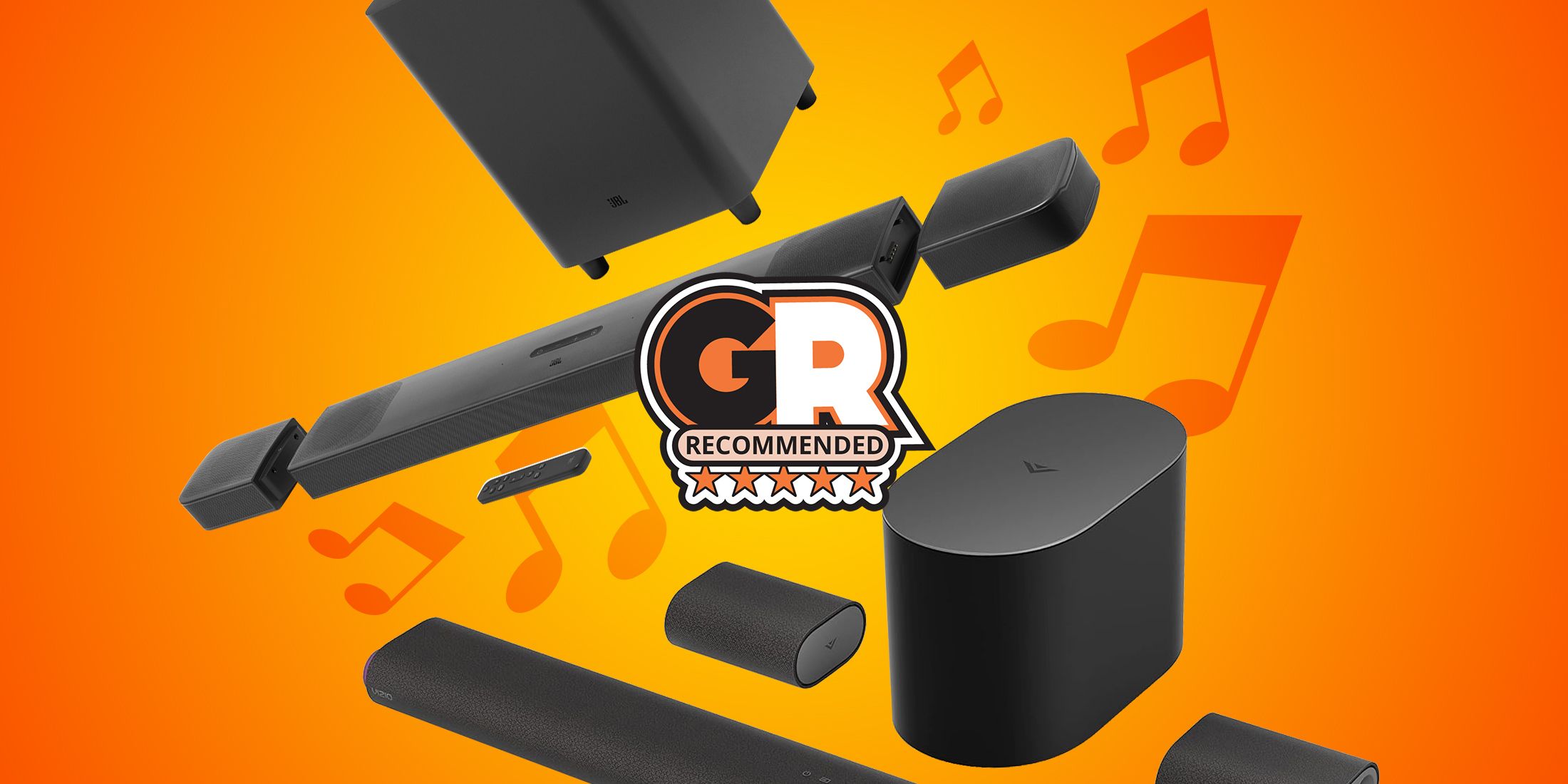
Best Soundbars for Listening to Music in 2024
Find the best soundbars for music lovers in our ultimate guide, featuring top picks for every budget and preference.
FAQ
Q: Are soundbars better than PC speakers?
A premium soundbar is usually a better choice than cheap speakers but may not have the ideal connections for a PC. On the other hand, buyers will find that a pair of bookshelf speakers outperform soundbars with music playback, but they take up more space.
Q: What do I need to know before I buy a soundbar?
Buyers should consider whether they need a soundbar for computer audio or other wired and wireless sources. Also, soundbars with wireless subwoofers can dramatically improve bass tones but have a less compact configuration.
Q: What is the argument against buying a soundbar?
Even soundbars that claim to have 5.1 or 7.1 surround sound often struggle to output convincing multi-channel audio. Unlike bookshelf or floor speakers, soundbars are limited by a form factor that tightly packs several small speakers in a compact design.

